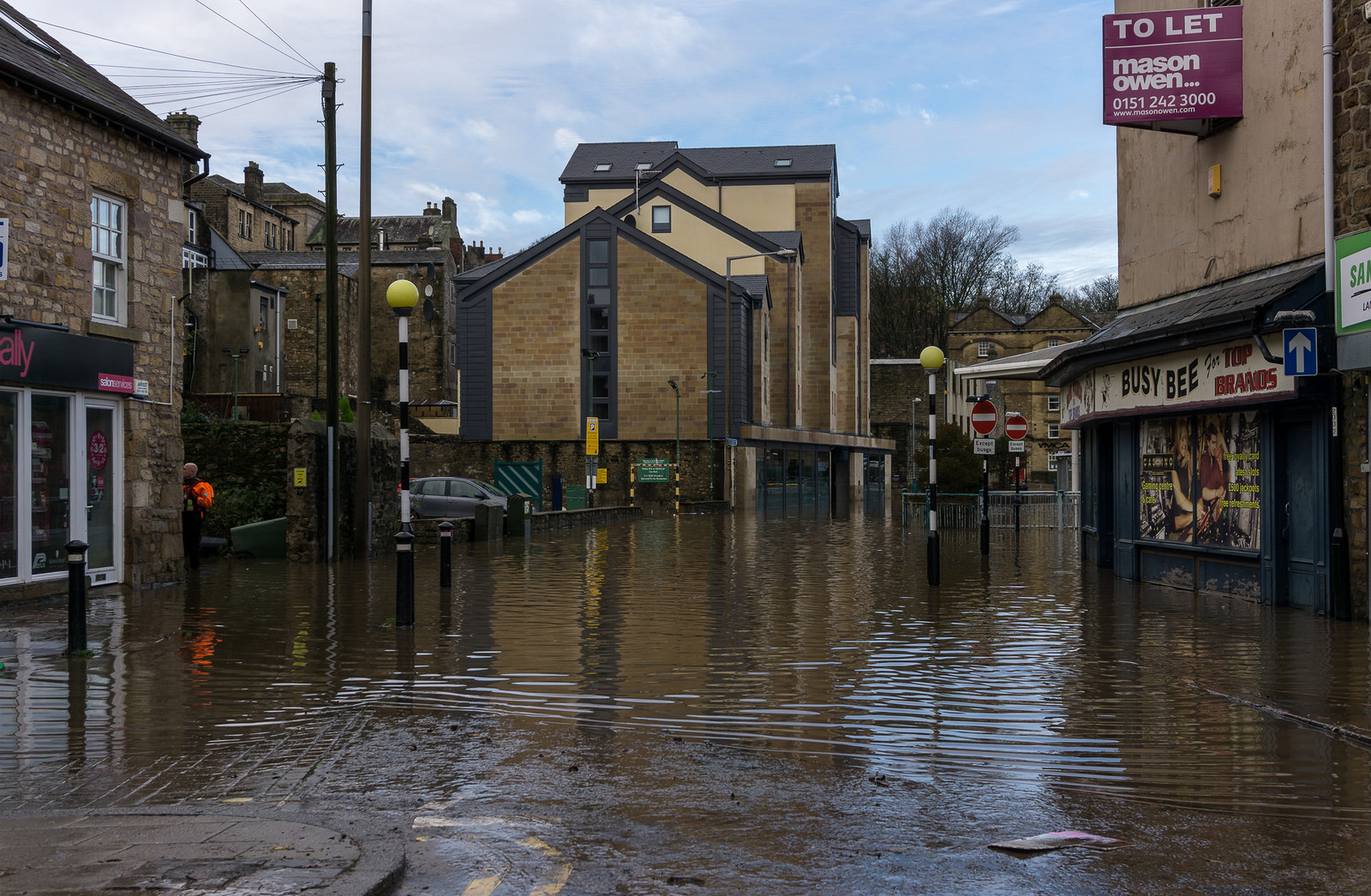Some time ago, I put myself forward to write a post for this site and set time aside this week. In some ways, the timing has turned out to be apt.
Last weekend, Lancaster and surrounding areas were battered by the weather, leading to significant flooding and electricity being cut off to 55,000 Lancaster homes. The university has itself been hit by the blackout, to the extent that it decided to cancel teaching until the end of term, with some students evacuated from their accommodation blocks because of the lack of heat and light.
Students have been evacuated from @LancasterUni accommodation. They're in Great Hall, Chaplaincy, LICA, or Nuffield. pic.twitter.com/pKYfJ8kKZl
— Mathew Gillings (@mathewgillings) December 7, 2015
As I write, intermittent powercuts are ongoing. I, like many others, have been working from home for the past few days. This has, though, given me the chance to reflect on my time so far here at the university and the Centre for Mobilities Research (CeMoRe).
I arrived in July as a new ‘Lecturer in Mobile Work’ – one of the 50 new lectureships created to celebrate Lancaster’s 50th anniversary. This week I will be embodying its title more literally than usual.
At times, though, I have found the moniker a little tricky to wear. My pitch to the university on the theme of mobile work mostly concerned my research into credit lending and default and in particular the organisational and technical work of managing more or less mobile populations of debtors. For example, the data-driven deployment of various forms of remote contact, ranging from debt collection letters, to semi-automated telephone calls, to text messages, or the transformative impact of new digital infrastructures on the work of payday lenders. This is a bit of an unconventional understanding of what mobile work is, and has on occasion led to some assuming –incorrectly, sadly! – that I am primarily an expert in mobile labour.
As much as this week may be providing me with a practical lesson in this area, becoming involved with Cemore has really convinced me of the benefits that come from its open understanding of such questions. Last week, for example, the Centre hosted a Research Lunch, which aimed to highlight the range of work being undertaken at Lancaster around the theme of mobilities. This involved roughly a dozen staff and doctoral students giving strictly timed, three minute ‘standups’ about their research.
The diversity was quite extraordinary, with work ranging across the disciplines, and focusing on topics as far afield as insect mobilities and their impact on tropical disease (Dr Rod Dillon, Faculty of Health & Medicine), situated sound compositions made on the move (Samuel Thulin, Sociology Department), the expectations surrounding driverless cars (Professor Katy Mason, Department of Marketing), and how wearable technologies might be harnessed to train mindfulness (Dr Corina Sas, School of Computing and Communications).
In this context, my slightly wide understanding of mobile work looks maybe more at home. As these few very brief examples begin to point towards, societies and economies are deeply, arguably increasingly, concerned with the impacts of mobility – whether human or non-human, whether tangible or data-driven – and are arranging a plethora of organisational, technical and scientific activities around such phenomena. Mobile work – that is, work on mobilities – is a defining feature of our age. My time at Lancaster has rendered this clearer to me than ever before – and that was even before the infrastructural destruction of the past few days.
This does, though, bring to mind two interrelated sets of questions, perhaps as relevant for mobility researchers as for Cemore itself.
The first concerns mobility as an object of study: is there a need when focusing on questions of mobility to render this object of research more distinct? This, it seems, is a perennial question at Cemore, given it hosts approaches ranging from seeing (im)mobilities as Bergsonian ‘reality is movement’, to theoretical and empirical concerns with migration, transport, cycling and walking.
Before coming to Lancaster, many of my own attempts to grapple with related questions have taken a route through what might broadly be termed the ‘processual’ turn, which looks to try to understand the effects of social and material interrelatedness, whether slow or quick, visible or not. The overlap with mobilities research should be obvious. One of the things I hope to do over the coming months and years is to bring this kind of work into more explicit dialogue with work within the so-called new mobilities paradigm (I would, I hasten to add, by no means be the first to do this), in part as a way of rendering more clear – to myself as much as anyone else – what a specific focus on mobilities as compared to, say, process, brings.
The second question is one of method. What Cemore does very well in my view – and the recent Research Lunch was testament to this – is to open up discussions around what the apparently overflowing dimensions of mobility do to the methods that are brought to study them. The Mobilities.Lab equipment resource here at Lancaster, with its underwater microphones, drones, and spyglasses (plus more conventional recording equipment) is itself a provocation in this respect: it asks researchers interested in registers of mobility to reconsider how exactly their specific mobilities are being followed. Are there ways to attend to them differently/better/more nimbly? What does a closer/more distant/temporally reconfigured view do to the object in motion being studied?
We should be rightly cautious before suggesting that adopting ‘mobile methods’ means dispensing with approaches that have long served a range of disciplines quite well. But to draw too sharp a line around what this particular category contains and excludes would be to miss the point. Not only is there a long history of doing and inventing methods on the move – think, for instance, of the provocations posed to the social sciences by approaches as disparate as ethnography and actor-network theory – but also the challenge posed by the injunction to rethink methods in terms of mobility (both present and absent) is not necessarily concerned with the closer physical co-presence of the researcher to the subject/object of interest. It might instead rather be considered as an augmentation of both existing and new methods with an analytical orientation towards (im)mobility. This could concern the movement of information as readily as embodied life. In the face of the challenges to the empirical that the social sciences are confronting, these kinds of agile methods seem more necessary than ever.
These are challenges that I take to heart as I look to move forward with new projects here at Lancaster. But this is not just about doing the practical work of social science differently, it is also about reconsidering what intersecting relationality/process/(im)mobility does to the relationship between the researcher and the researched. The mobilities turn puts this on the table in ways that are somewhat different to how this has been done elsewhere. And it is perhaps in this respect that we begin to see what really makes the turn to mobilities distinct and exciting.
Acknowledgements
Many thanks to Monika Buscher for comments on a draft of this post and to Keith Sergeant for permission to use the image of the Lancaster floods.




